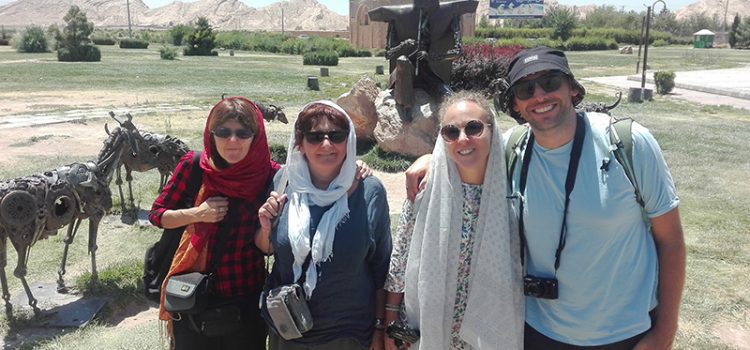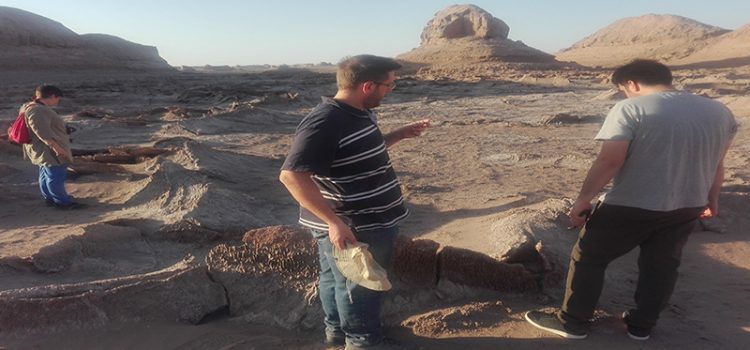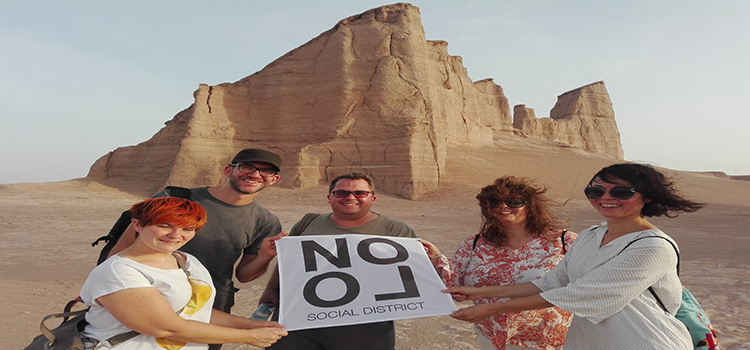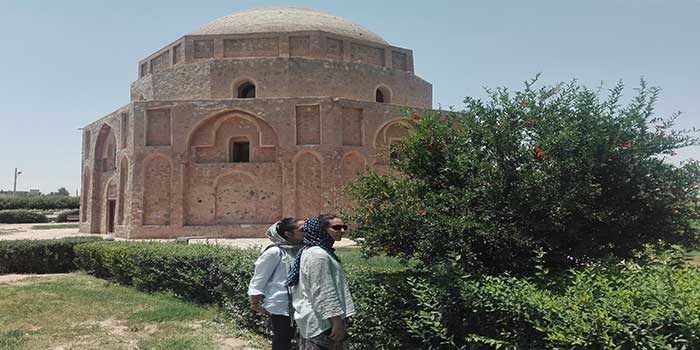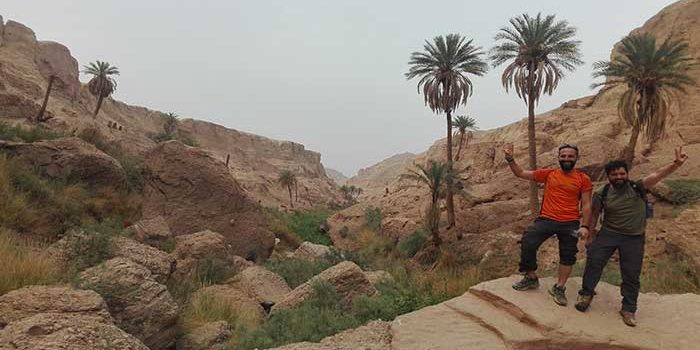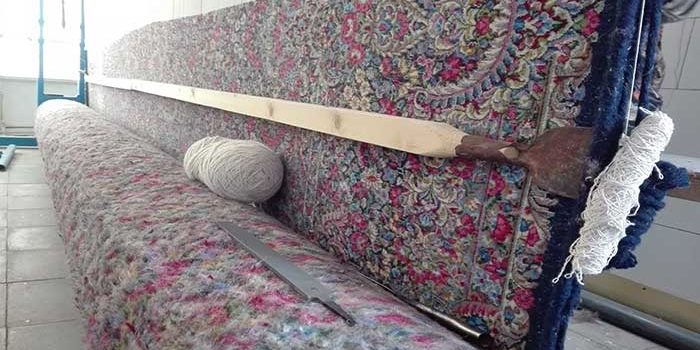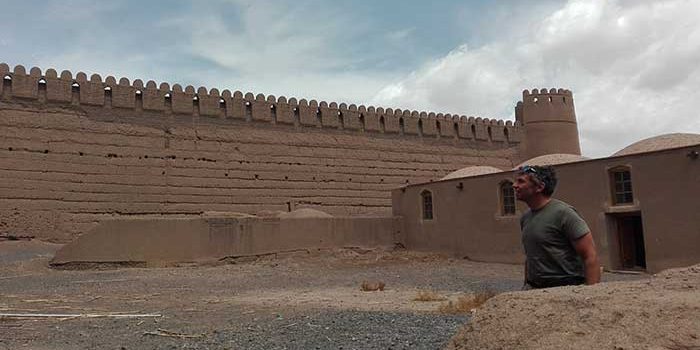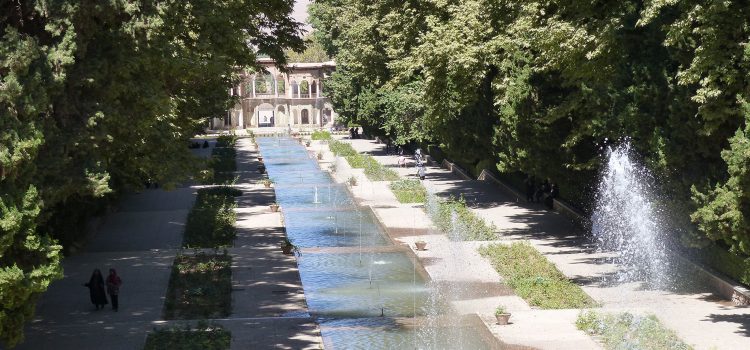Kerman, land of persian carpet (1)
If you’ve ever seen a Persian carpet, you know it’s a beautiful work of art. But what distinguishes a Persian carpet from others? Well, the name Persia refers to a part of the world that includes Iran and Turkey, both once part of the Persian Empire. It’s a region famous for rug weaving.
When we talk of carpets, involuntarily, the name of Iran comes to mind. The great art experts of the world believe this fact. The 2 words of carpet and Iran are synonymous in any language, therefore, carpets being the obvious symbol of the Iranian talent in art.
We can positively affirm that the finest and the most sumptuous carpets of the world are woven in Iran. The art of carpet weaving in Iran is deeply connected with the culture and the customs of the people of this land and it sources from their instinctive feelings. Iranian skillful carpet weavers mix wonderful patterns with admirable colors, an art which is only expected from outstanding painters. Art experts in the world compare the Iranian carpet to a multicolored pleasant garden, full of flowers, vegetables, birds and beasts and terrestrial and legendary creatures. Everyone can possess this little charming garden in his house.
Hand woven rugs have a certain built-in value that ranks them above machine-made products. Hand-made labor is more costly and carries with it a certain expectation of care and quality. Hand-made carpets involve an endless series of choices and decisions, minor twists and turns, that collectively give the piece its personality and presence, something that the finest machine made carpet lacks.
In Iran, Kerman has been the home of a thriving carpet weaving industry for centuries. Kerman’s hand-woven, knotted pile carpets are widely regarded by art historians and collectors as among the finest in the world for the quality of their materials and workmanship, their distinct range of attractive styles, and the use of vibrant colors supplied by Kerman’s famed master dyers. The carpet weaving craft as practiced in Kerman developed from a variety of influences, many of them external to Kerman. Kerman carpets are one of the traditional classifications of Persian carpets.
Kerman rugs are prized for a wide range of designs, a broad palette, use of natural dyes and fibers, great tensile strength and abrasion resistance, and expert color combinations. Typical manufacturing used an asymmetrical knot on cotton foundation, but rare examples include silk or part silk piles, or silk foundations with wool pile.
Because of the tremendous demand for rugs produced in Kerman and the complex demographics of this demand, a surprising variety of styles and designs are produced. Some Kerman rugs are woven explicitly for moneyed buyers from the West, some for local consumers with very different tastes.
Damask Rose is the most popular motif in Kerman rug designs, particularly in “Sabzikar Ravar” and “Gol Sorkhi” (Red Rose) rugs. Other well-known motifs are “Ghab Ghora’ani”, “Setooni”, “Ghabi”, “Kheshti”, “Saraam Atiyeh”, “Jangali”, “Shekargah” and “Lachak-Toranj”. Kerman antique carpets often use the Toranj motif border of margins and narrow lines. Floral patterns woven into Kerman carpets in the 19th century are derived from the patterns of Kerman shawls, also made in Kerman at this time.
But how is this old traditional artistic work produced?!
The materials that go into weaving rugs are as important as the design and workmanship. They contribute enormously to the overall impression of the rug – its color, texture, tactile feel, and above all its durability. Wool, Cotton, Silk, Dyes
By weaving, a process of creating a textile by interlacing threads, Persian carpet is made. Weaving is done on a loom, a frame-like piece of equipment that holds two basic types of threads.
- Warp threads run vertically, attached to the loom frame and held in tension.
- Weft threads run horizontally and are interlaced with warp threads.
Most Persian carpet are made by hand, and their width is determined by the width of the loom on which they are made. Persian carpets may be made of natural fibers like cotton, silk or wool.
Now let’s explore a few types of rugs and techniques for making them.
Knot Techniques
Persian carpets are famous for a luxurious thick pile or carpet surface (the stuff you run your fingers and toes through) that’s made by weaving with an important step added. During weaving, many hand-tied knots are added in rows to the warp threads. Then weft threads are interlaced above them and packed down with a comb to hold the knots in place.
| A carpet weaver at work. The high vertical strings are the warp threads. Notice how his weaving is creating thick pile. |
The knots form the surface texture and image. Knot density, or the number of knots used within a square inch area, varies by region and rug type. It can sometimes signal a very high quality rug.
Another factor involving knots is knot type, or how the knot is tied to warp threads. It also tends to vary according to the geographic area in which the rug is made.
Knot Types
Knot types include the Persian or Senneh knot, also known as the ‘asymmetrical’ knot. In this knot, yarn wraps around one warp thread, passes under a neighboring warp, and then goes out to the surface.
| A Persian carpet with an intricate design |
Many Persian knots fit into a small area and are often used for detailed designs. The Turkish or Ghiorde knot, also known as the ‘symmetrical’ knot, has yarn wrapped around two warp threads. Each end of the yarn piece is then wrapped behind a warp and brought to the surface. This creates a more durable rug.
And then there’s the Jufti knot, used in a specific area of Iran, in which a yarn is wrapped around four warp threads.
A trained weaver can work quickly, but it’s still a time-consuming process and it may take up to two years to complete a rug. When weaving is completed, the pile surface of the rug has to be carefully shaved to ensure all the yarns are the same height — this way the design is clear and crisp.
Flat Weave Carpets
Another type of Persian carpet is a flat weave rug known as a kilim. These rugs don’t have knotted pile and they use many special types of weaving techniques that involve skipping a certain number of warp or weft threads to make designs.
One of these techniques is called slit weaving, in which gaps are left between the boundaries in the weft threads of color blocks that are woven to form the patterns on the carpet. Another method, called dove tailing, connects the borders between color blocks by interlocking weft threads. This creates blurrier edges to the design.
| Kilim carpets. Notice the geometric patterns on the woven surface. |
Diario di viagio
They talked to each other and a few hours later called their group like this. The four kind nice Italians were fully in agreement during the 2 day tour to Kerman, Mahan, Rayen and Kaluts in Lut Desert. 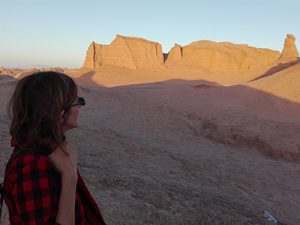
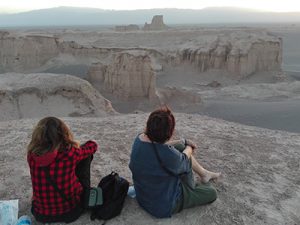
4 different personalities but always close and friendly. While Ivan was very much into photography,
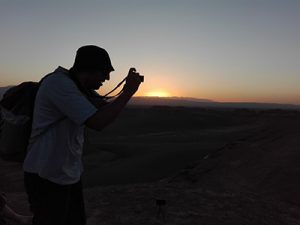
Nicoletta was more into enjoying the new landscapes and places. The time before and after sunset and sunrise of Kaluts was so incredible that Francesca and Nicoletta tried to sink into silence and surprise the stunning landscape offered.
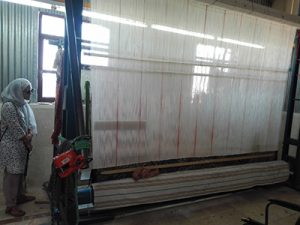
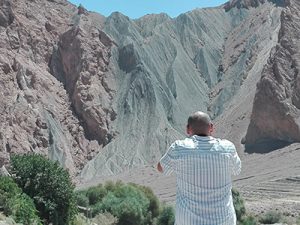
Ivan was the nice friendly photographer for every one. Veronica was courageous and and strong. Trekking on the earth in Kaluts was not easy with bare feet for Francesca!
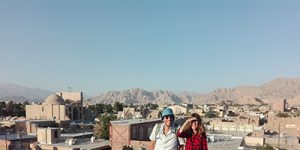
The tour also visited the colorful mountains and they enjoyed the carpet weaving workshop on the way to Rayen. Ivan and Veronica visited towers of silence on the hills near Kerman while Francesca and Nicoletta preferred to stay in Yas Guesthouse and rest. Saluti a tutti.
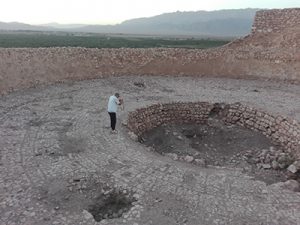
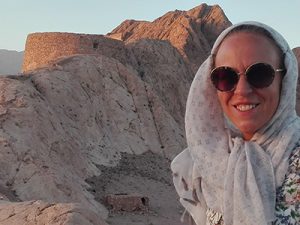
PHD students of geophysics
The tour to Mahan, Rayen, Bam and Kaluts took 2 days.
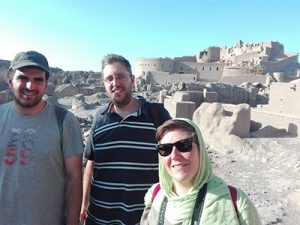
Rolando and Gianmarco students of geophysics and Laura a student of nerves sciences all PHD level were members of the tour. Right from the beginning of the route to lut desert and in the mountainous road of Sirch, stops started. It was unique opportunity for me as a guide to learn a lot about geology, geomorphology, formation of mountains, kaluts, egg hills etc,. At the same time,they had the chance of tangibly experiencing what they have already studied through books and sources at university. However, it was Laura who was the only adventurous member of the tour to trek, climb and take lots of pictures.
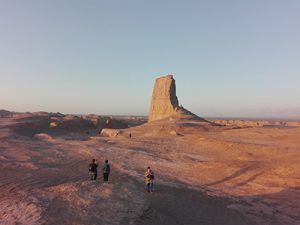
What made the three visitors surprised, the cool weather in Kerman, Mahan, Rayen and Sirch. Three different persons in Yazd had recommended them not to visit Kerman as it is HOTTER than Yazd!!!!!! However, since they had arranged their itinerary a few months ago, they couldn’t change and skip Kerman. Finally, it became a matter of joke and fun to remember the recommendation! Even, the heat of Lut Desert was not felt as the organization was perfect.
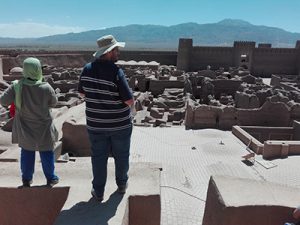
I am grateful to ROlando and Gianmarco for the scientific information they offered me during the visit to Kaluts, egg hills and Sirch village. I wish them all, as representatives of Napoli, happiness, prosperity and success. “We must not forget that sometimes some facts are as long as hundreds of kilometers!!!!!!”
different but perfect
The two day tour to Mahan, Rayen, Kaluts and Shahdad was great. The five nice members were in full agreement in everything.
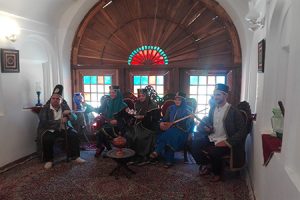
The spice of the group was Andrea to whom everybody was kind and he was very dear to all. Sabrina who was considered the head was brave and adventurous. Benedata, though suffering a problem in her foot, joined the fun activities. Francesco, calm and nice, recorded everything in his memory, so patient. And Orsolla, for whom the heat was both a new experience and a matter was the only member with the fan in hand even in the van.
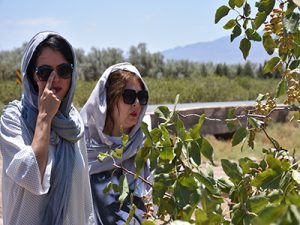
It had been stormy and hot during the day but we managed to arrive at the right time. The night of desert left all of us a stressful memory. AC could not start due to the low voltage the reason of which had been he fire in Shahdad and burning some trees and wooden lamp posts. To breathe in the room was too difficult. But midnight was the time everything ended in goodness. Coming back from the large Caravanserai the next morrning, a white dog found us very familiar. He approached and in his own method greeted each of us. and Orsolla was the first to touch him. Sabrina and Benedetta bravely stepped into the flowing old qanat around 8 meters underground and trekked for dozens of meters in the water. Visiting the five amazing Indian doors of Shah Nematollah Mausoleum (artistically made 4 centuries ago with marquetry and enameling on) was the ending part of the tour on August 7. 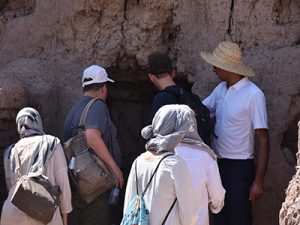
Nice Italian Girls
Valentina and Serena, two brave girls from Italy, visited Kerman area for 3 days. By brave, it means that while many Europeans are afraid of traveling to the hottest spot of the earth, these two did it!
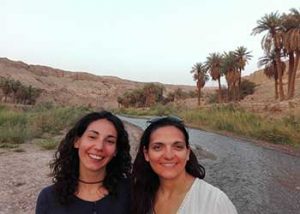
June 5 in the afternoon, they stepped into the Kaluts area on an off-road tour by a 4*4 pickup. They left shoes aside and trekked on the hot sand around with bare feet.
From two full days being in Lut desert, they passed one day in Keshit where the amazing canyon is an enjoyable destination not only as an amazing destination but also funny trekking in water and even swimming and diving!
The round big cement cake with candles around at the garden in Keshit village was a big surprise to Valentina because it was her birthday! While Helia, the daughter of the owner of the garden was giving a ride on the 4*4 motorbike to Valentina, others in her absence decorated that strange cake with candles in the dark. When she returned to the garden, she was so excited by hearing the happy birthday song at the garden in the dark with candles burning.
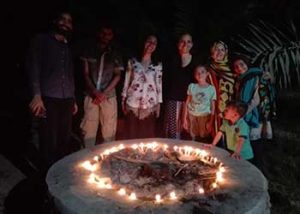
Serena, the master in special jumping in the air (!!), was always kind, smiling and helpful.
Irankalut wishes them a happy prosperous life.
Italian Dante & Domenico
As usual, warmness, friendliness and funny mood was the joy these two nice young Italians had with them during the 3 day tour to Kerman, Bam, Mahan, Rayen and Dasht-e-lut. While Domenico was showing energy to run, jump and climb, Dante was relaxed and moved like a large ship on the ocean. While we were visiting the ruins of castles surrounded by bushes near the village, an old female villager was carrying a heavy bag of garlic and a spade returning home from the farm late afternoon. Domenico approached and offered help and carried the heavy load to her home. This was a matter of making jokes of employment. Domenico proved to be a man of hard work and passed the test with high score!
They were lucky to end the three day tour in Bam and take the train (as planned earlier) directly to Yazd.
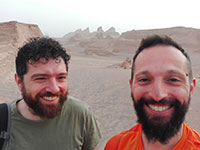
Kaisu from Finland
It was interesting to receive an experienced lady from Finland who was the first tourist to ask for a visit to Ravar area before visiting Kaluts. She had a professional camera with her and took so many pictures. She was very much interested in Persian carpets and this time in Kerman, she wanted to visit the home workshops where the locals were busy weaving.
In a workshop with 3 looms hanging, 7 ladies were at work. It was sad to see their harsh fingers, sitting on a piece of wood and wearing a mask. What they were producing is really stunning (two 4*6m carpets with very detailed small flowers). But what makes any visitor sad is that the income of such an artistic hard job goes into the pockets of the dealers who are between producer and customer. We hope Kaisu’s photos finally helps the poor ladies who produce carpets.
In Kaluts area, every thing photogenic and Kaisu did not want to skip anything. in spite of older age, she walked like a very young lady and never stopped climbing or trekking in the deep sand!! Bravo….

Michele Bisatto
As a tourist much into history, culture and human life, he preferred to tolerate the noise but stay the night at a traditional guest house in Kerman. He could have gone to Bandar Abbas with much cheaper payment by a VIP bus, but preferred to have a guide and a private driver to pass through amazing places on a less official route. He had the chance to visit Shazde Garden in Mahan, Rayen castle in Rayen, Jiroft city and landscapes, Kahnuj city and most important of all, ancient mud hill of Konar Sandal near Anbarabad. The hill belongs to at least 3000 years ago with stunning traces of life. He was very curious to see and search every pottery particle which were in abundance on and around the hill. Visiting Konar Sandal mud ancient hill gave him an insight to plan visiting Choghazanbil Zighurat in Susa, south of Iran. Just to make you imagine how exciting the one day tour was, I must tell you that we did not have even the feeling of hunger for lunch. We had only a few cookies and coffee late afternoon at 5pm in Kahnuj on the way to Bandar Abbas.
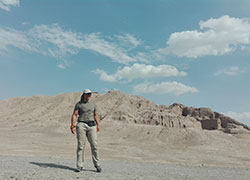
Bagh-e-Shazdeh
Shazdeh Garden

meaning Prince’s Garden is a historical top Persian garden located near (2km away from) Mahan in Kerman province. It was constructed at Ghajar time while Abolhamid Mirza was the ruler of Kerman.

This top world heritage being located in the desert contains two pavilions, one right at the entrance and the other deep in the garden both of which are very eye-catching. Natural tall amazing fountains and very tall trees connect the two pavilions on a walking distance. Both sides of the sidewalk are full of condensed beautiful trees as well as flowers.

The wall around the garden is oval shape so that it can deviate strong desert winds while creating a circulation of air inside which together with humidity created by fountains make the garden atmosphere very fresh and dramatic.

Persian Gardens
The Persian Garden consists of a collection of gardens, selected from various regions of Iran, which tangibly represent the diverse forms that this type of designed garden has assumed over the centuries and in different climatic conditions. They reflect the flexibility of the Chahar Bagh , or originating principle, of the Persian Garden, which has persisted unchanged over more than two millennia since its first mature expression was found in the garden of Cyrus the Great’s Palatial complex, in Pasargadae.

Natural elements combine with manmade components in the Persian Garden to create a unique artistic achievement that reflects the ideals of art, philosophical, symbolic and religious concepts. The Persian Garden materialises the concept of Eden or Paradise on Earth.

The perfect design of the Persian Garden, along with its ability to respond to extreme climatic conditions, is the original result of an inspired and intelligent application of different fields of knowledge, i.e. technology, water management and engineering, architecture, botany and agriculture. The notion of the Persian Garden permeates Iranian life and its artistic expressions: references to the garden may be found in literature, poetry, music, calligraphy and carpet design. These, in turn, have inspired also the arrangement of the gardens.

The attributes that carry Outstanding Universal Value are the layout of the garden expressed by the specific adaptation of the Chahar Bagh within each component and articulated in the kharts or plant/flower beds; the water supply, management and circulation systems from the source to the garden, including all technological and decorative elements that permit the use of water for functional and aesthetic exigencies; the arrangement of trees and plants within the garden that contribute to its characterization and specific micro-climate; the architectural components, including the buildings but not limited to these, that integrate the use of the terrain and vegetation to create unique manmade environments; the association with other forms of art that, in a mutual interchange, have been influenced by the Persian Garden and have, in turn, contributed to certain visual features and sound effects in the gardens.

The Persian Garden represents a masterpiece of human creative genius. The design of the Persian Garden, based on the right angle and geometrical proportions, is often divided into four sections known as Chahar Bagh (Four Gardens). The creation of the Persian Garden was made possible due to intelligent and innovative engineering solutions and a sophisticated water-management system, as well as the appropriate choice of flora and its location in the garden layout. Indeed, the Persian Garden has been associated with the idea of earthly Paradise, forming a stark contrast to its desert setting.

It is the geometry and symmetry of the architecture, together with the complex water management system, that seem to have influenced design in all these gardens. The word Paradise entered European languages from the Persian root word “Pardis”, which was the name of a beautiful garden enclosed behind walls.


